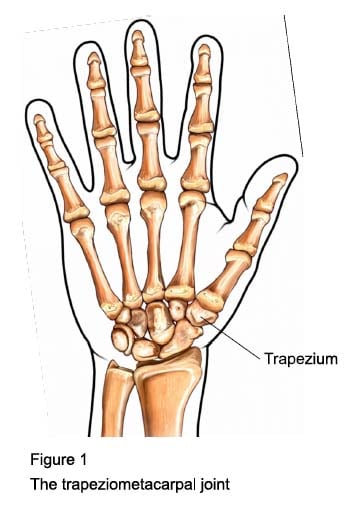The Procedure
What Are the Benefits of Surgery?
The main benefit of surgery is to relieve pain and so improve how your thumb works.
Are There Any Alternatives to a Trapeziectomy?
A splint often helps by restricting the movement of your thumb but you may find that a splint makes it difficult for you to perform normal activities. A steroid injection into the joint can reduce pain in most people but the symptoms usually come back after several weeks or months. It is possible to replace the joint with an artificial joint made of metal and plastic but most thumb joint replacements have a high failure rate and can also cause pain. For young and active people with no arthritis below the trapezium, it may be better to have an arthrodesis (where the thumb bones are permanently fixed together using screws).
What Does the Operation Involve?
Various anaesthetic techniques are possible. The operation usually takes an hour to 90 minutes. Your surgeon will make a small cut on the back of your hand at the base of your thumb, and remove the trapezium. Your surgeon may construct a ligament to connect the thumb to your wrist using a tendon that runs over the trapezium.
What Complications Can Happen?
General Complications of Any Operation
- Pain
- Bleeding
- Infection of the surgical site (wound)
- Unsightly scarring of your skin
Specific Complications of This Operation
- Continued numbness or pain
- Damage to the artery that passes near to the trapezium
- Severe pain, stiffness and loss of use of your hand














